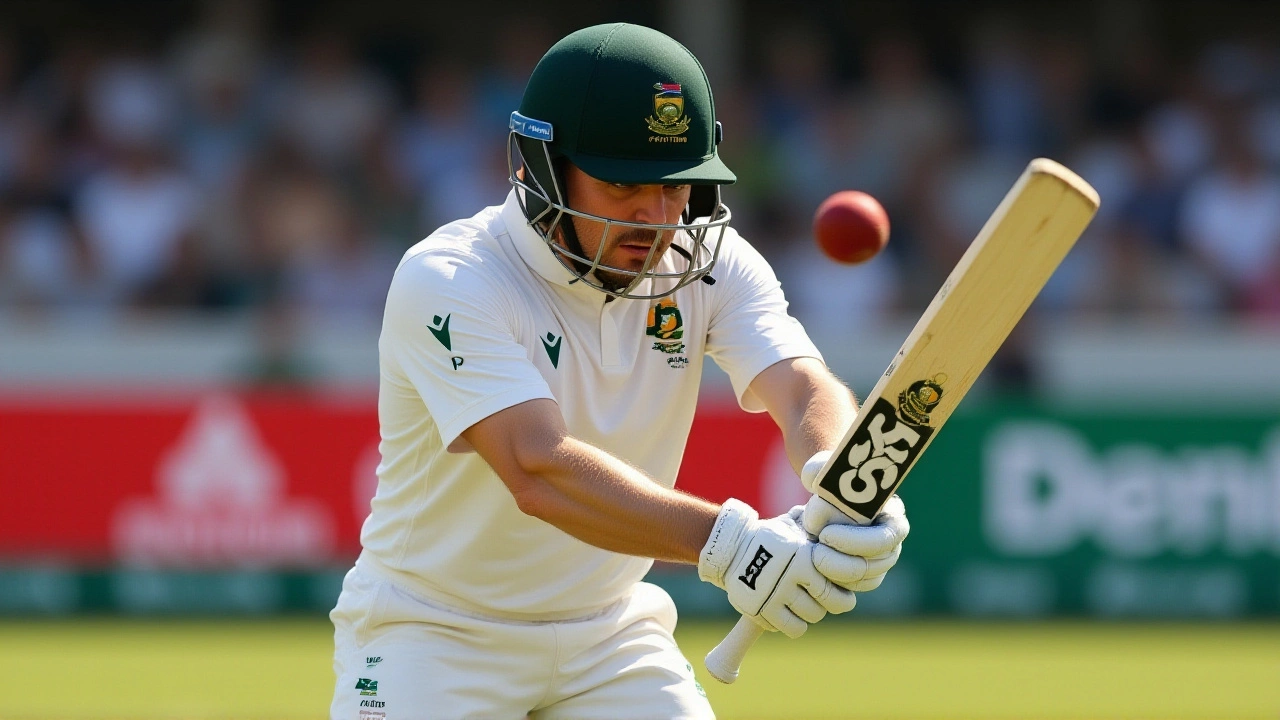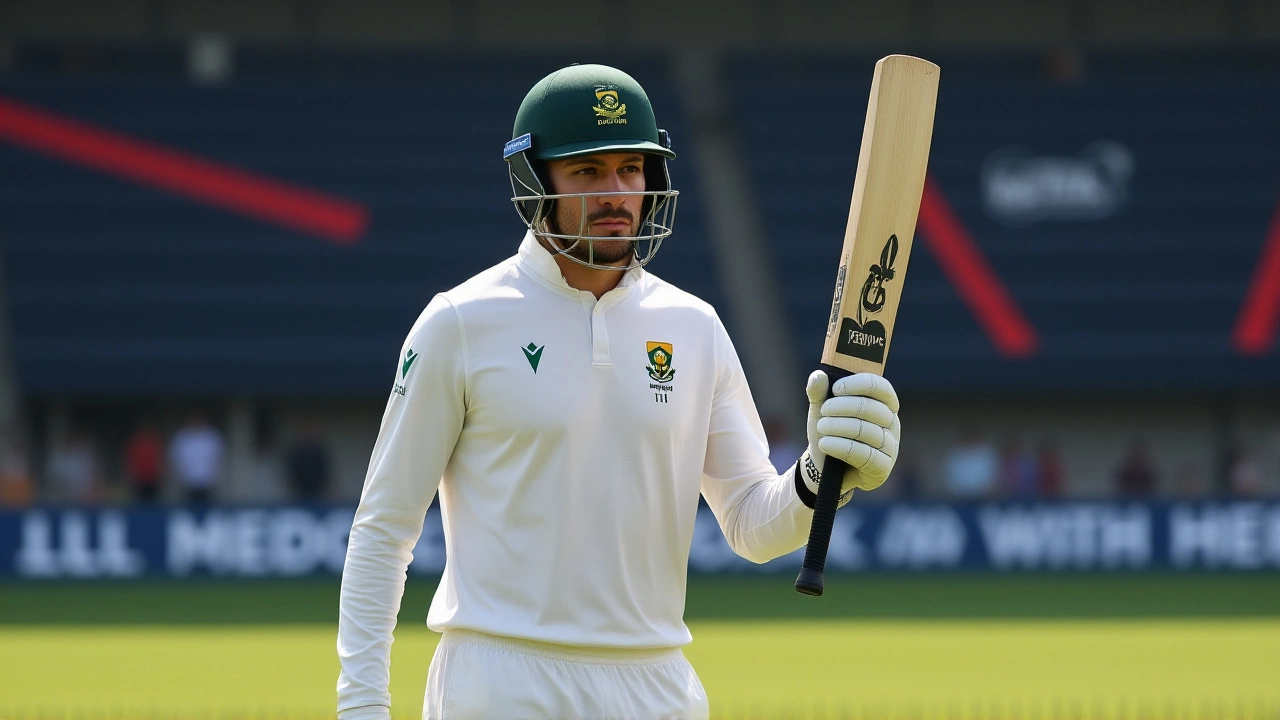On November 24, 2025, at the ACA Stadium in Guwahati, a 6-foot-8 left-arm fast bowler named Marco Jansen didn’t just play a match—he rewrote the record books. With a bat in hand and a ball in his grip, Jansen became the first South African ever to score a half-century and take a six-wicket haul in the same Test match on Indian soil, finishing with 93 runs and 6 for 48 from 19.5 overs. The result? India collapsed from 95 for 1 to 201 all out, handing South Africa a 288-run lead and putting them within touching distance of their first Test series win in India since 2000.
A Performance for the Ages
Jansen’s day was a masterclass in physical dominance and tactical precision. His height—unusual even among fast bowlers—allowed him to generate steep bounce on a pitch that Guwahati’s spinners had called a "road" the day before. But it wasn’t just the bounce. It was the rhythm. The relentless short-pitched barrage, as described by Times of India, kept Indian batters off balance, their footwork useless against deliveries that kept coming at chest height. He picked up Dhruv Jurel early, then had Rishabh Pant caught behind for 7. Nitish Kumar Reddy, looking to attack, edged to slip. Ravindra Jadeja, usually so composed, was bowled through the gate. Kuldeep Yadav, who batted for 134 balls for 19 runs, was caught by Aiden Markram. And then, with the tail exposed, Jasprit Bumrah—India’s spearhead—was bowled for 5, his bat flying as the ball zipped through.That sixth wicket didn’t just complete the haul—it sealed the collapse. India’s last eight wickets fell for just 99 runs. The only resistance came from Washington Sundar, who batted for 92 deliveries to make 48, and Kuldeep, whose patience was the only thing keeping India from total humiliation. Sundar’s control percentage of 92.9% against spin was the highest among Indian batters in the series—a statistic that only highlighted how little else worked.
Why Not Enforce the Follow-On?
Here’s the twist: South Africa didn’t enforce the follow-on.With a lead of nearly 300 runs and less than half an hour left on day three, captain Temba Bavuma and coach made a bold call. They chose to bat again. Why? Because they knew the pitch was deteriorating, and because they wanted to ensure the final session belonged to them—not to India’s spinners, who had already shown they could make things uncomfortable. It was a move born of confidence, not caution. And it paid off. South Africa closed their second innings at 0 for 0, with the sun setting on a day that felt like a turning point.
It’s worth remembering: South Africa haven’t won a Test series in India since Hansie Cronje’s side did it in 2000. Two decades. That’s longer than most of this Indian team has been alive. This isn’t just about one match—it’s about legacy. And Jansen, at 25, is now part of that legacy.
The Spin Trio That Broke India
Jansen didn’t do it alone. The South Africa cricket team’s spinners—Simon Harmer (3/51), Keshav Maharaj (1/36), and Jansen himself—combined to dismantle India’s middle order. Harmer, the veteran, found turn and variable bounce. Maharaj, the crafty left-armer, trapped the right-handers in front. And Jansen? He was the wrecking ball.India’s top order, which had looked solid early on—Yashasvi Jaiswal’s 58, KL Rahul’s 22—was undone by deliveries that lifted sharply off the length. The ball didn’t seam much. It didn’t swing. It just jumped. And when it did, the Indian batters were caught flat-footed. It was a reminder: on Indian soil, even the best batting lineups can unravel when the conditions turn hostile.

What This Means for the Series
South Africa now hold all the cards. They’ve got a lead of 288, a pitch that’s breaking up, and the momentum. India, on the other hand, are reeling—not just from the scoreline, but from the psychological blow. Jansen’s all-round performance wasn’t just statistically rare—it was emotionally crushing. He didn’t just take wickets; he broke the rhythm of India’s batting philosophy.For South Africa, this could be the moment they stop being seen as perennial challengers in India and start being seen as winners. For India, it’s a wake-up call. The spin trio of Jadeja, Kuldeep, and Sundar can’t be expected to bail them out every time. The top order needs to adapt. The middle order needs to stop playing heroics. And someone—anyone—needs to stop Jansen.
They’ll get another chance. But on this day, in this stadium, in this moment, it was Jansen’s stage. And he owned it.
Frequently Asked Questions
Has any other South African ever taken a six-wicket haul in India?
No. Marco Jansen is the first South African pacer to take a six-wicket haul in India since Dale Steyn’s 6/43 in 2010, and the first ever to combine it with a half-century in the same Test on Indian soil. Even legends like Allan Donald and Shaun Pollock never managed this double on Indian pitches.
Why is Jansen’s performance considered historic for left-arm fast bowlers?
Since 1988, only two left-arm fast bowlers—Zaheer Khan and Mitchell Johnson—have taken a five-wicket haul in a Test in India. Jansen is the third, and the only one to do it while also scoring 90+ runs. His combination of height, pace, and bounce made him uniquely effective on a surface that usually favors spin.
What impact does this have on South Africa’s chances of winning the series?
With a 288-run lead and a deteriorating pitch, South Africa are heavy favorites to win the match and clinch the series. Their last series win in India was in 2000. If they win this Test, it will be their first in 25 years—and only the third ever on Indian soil, making it one of the most significant overseas triumphs in their history.
How did the pitch contribute to India’s collapse?
Kuldeep Yadav called it a "road," and it lived up to that description: uneven bounce, inconsistent carry, and unpredictable turn. Batters who played for spin were beaten by pace and bounce, while those who played for pace were trapped by the turn. Jansen exploited the inconsistencies perfectly, while India’s batters looked confused and out of sync.
Why didn’t South Africa enforce the follow-on despite such a big lead?
Temba Bavuma chose to bat again to ensure the final session belonged to South Africa, not India’s spinners. With the pitch wearing down, they wanted to build a massive total to guarantee a win, not risk a last-day collapse or a rain interruption. It was a strategic, not a conservative, decision.
What does this mean for Marco Jansen’s career?
Jansen’s 93 and 6/48 is now the benchmark for all-rounders in Test cricket on Indian soil. He’s no longer just a tall fast bowler—he’s a match-winner. This performance will elevate his status globally and likely secure his place as South Africa’s go-to all-rounder in overseas Tests for years to come.
